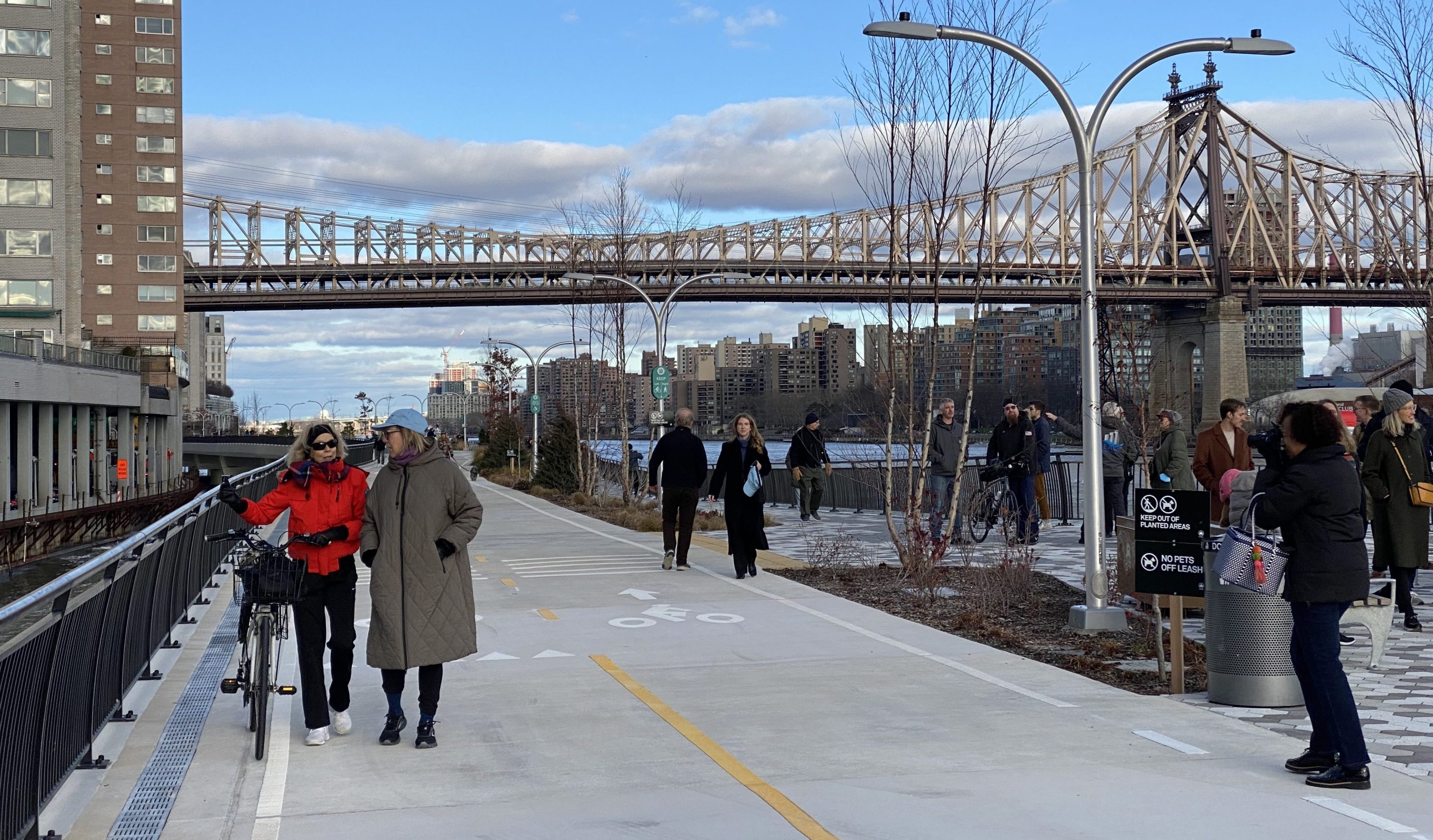Want to expand the network of the bike and pedestrian paths across the Empire State? Now there's a roadmap for that.
The “Grassroots Guide” [PDF] published by the Albany-based Parks and Trails New York offers an in-depth manual for anyone — from residents looking for better bike and walking infrastructure area to politicians and government operatives — to start growing a greener transportation network.
“The goal of this guide is to provide the next generation of trail advocates with the tools to make their visions into reality, and turning those abandoned corridors into beloved community assets,” said guide co-author Erica Schneider, policy and planning coordinator at Parks and Trails New York.
Across the state, there are some 2,000 miles of greenway trails — and nearly 1,500 more miles of potential additions along defunct railroad rights-of-way, utility lines, and other corridors, according to the report.
The handbook could come in handy for greenway supporters in New York City, where officials have announced several expansions in recent years after advocacy by the NYC Greenways Coalition, a collection of several grassroots activist groups.
But those new greenways can often take decades to go from dream to reality — as was the case with the recently opened greenway along the East River in Midtown — and many existing cycle paths have deteriorated due to a lack of maintenance.
“It’s a long road,” said Schneider. “It takes a lot for an idea to make it onto paper and for that plan to make it into reality, but it’s not impossible.”
The 48-page guide breaks down the step-by-step process for building new greenways and making them successful in the long haul — from finding a suitable location, to getting residents, landowners, and electeds on board, to lining up funding to finally building the paths themselves.
It all starts with advocates identifying a corridor to repurpose.
Then they need to craft a vision for the project and rally supporters around it, including getting landowners involved early, since gaining their support can be one of the most challenging steps if they're hesitant to open their space to the public, according to Schneider.
The guide provides a list of government agencies that are best suited to lead a project or lend support.
The second half of the guide includes how to launch a feasibility study, seek funding and grants, acquire the land, and finally design and build the greenway.
Key to the success of greenways is not just construction, but upkeep, which has become a serious issue for many existing paths in New York City, as Streetsblog has documented extensively, as well as upstate.
For example, the state’s namesake 750-mile Empire State Trail — which runs east-west from Albany to Buffalo, and north-south from New York City to the Canadian border, has more than 10 percent of its paths in “poor or or fair condition,” a report found in 2020.
The underfunded city Parks Department struggles to keep its large portfolio of greenways intact. Paths have gotten busted up by tree routes. It took the agency a decade and a half to even begin to fix a crucial bridge connecting to the busiest bike path in the nation along the Hudson River Greenway uptown.
Advocates have called on the city to move greenway management to the Department of Transportation, which is better equipped to repave cracked road. But that agency has also neglected some of its own paths, letting vegetation grow out of control last summer.
The different parts of city government should just do what they're best at, according to one Brooklyn advocate — in other words, let DOT manage all the asphalt, and leave all the greenery to Parks.
“What we’ve found out over the years is that the DOT struggles a bit with the things that are green and the parks department struggles a bit with the things that are asphalt,” said Brian Hedden, advocacy and greenway projects coordinator at the Brooklyn Greenway Initiative.
Organizers and officials need to make sure it’s clear early on in a greenway’s development which agency or entity will be responsible for maintaining greenways.
“Some of our biggest issues happen when there wasn’t a plan established and no one claims ownership of the maintenance,” said Schneider.






